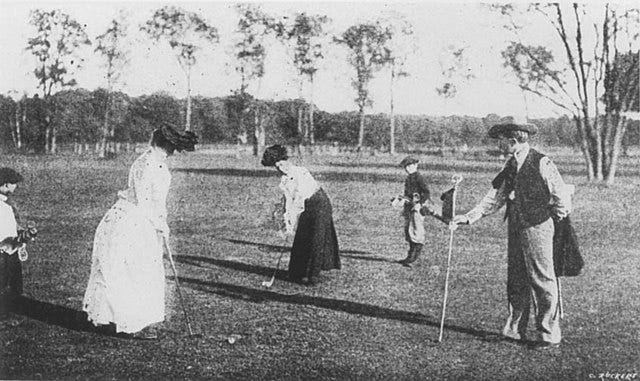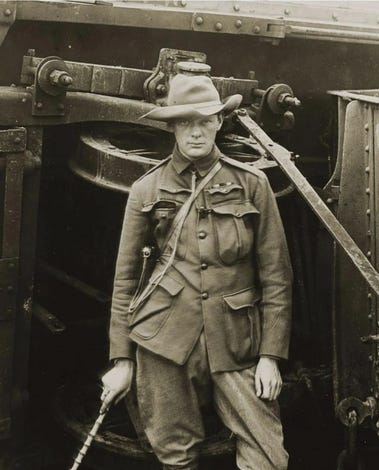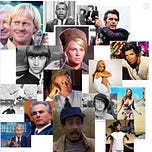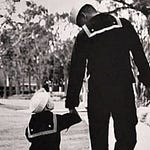They didn’t see it coming.
It is the year 1900.
The twentieth century.
And the view from here, for the most part, looks good.
A momentous century has passed bringing many advancements; and even more are promised in the new century to come.
And there is peace.

In the year 1900, Europe stood ready to embrace the twentieth century.
And the party started with the Paris World Exhibition, a world’s fair.
From April to November 1900, fifty-seven million people would come to see it.
The wonders at the fair boggled the mind:
a Ferris Wheel one hundred meters tall;
automated food service machines;


Left: The Sousa Band, representing the US, performed on July 4. Right: Campbell’s Soup won a medal for excellence and the medal is still depicted on all labels. films of opera and ballet with synchronized sound;
a sixty-foot telescope offering views of outer space;
x-ray machines;


Left: Exposition visitors travel on moving sidewalks. Right: The Palace of Electricity. Rudolf Diesel’s peanut oil-powered engine; and
a moving sidewalk.


During the fair, twenty-eight nations sent athletes to Paris to compete in the second modern Olympics Games.

And the President of France hosted all of the mayors of France, Algeria and the French colonies — 22,965 men — at a banquet under tents in the Tuileries Gardens.
It was a celebration of French unity, and the dinner guests consumed 2,500 liters of mayonnaise.


In 1900, men who would play outsized roles in the new century were born:
Heinrich Himmler, head of the Nazi SS;
Martin Bormann, Hitler’s personal secretary;
Vasily Chuikov, Soviet army commander and defender of Stalingrad, who would accept the Nazi’s unconditional surrender in Berlin in May 1945; and
Ernie Pyle, US war correspondent.


Other men of future significance were in their youth:
Winston Churchill, 26, a new member of Parliament.
Douglas MacArthur, 20, a cadet at West Point.
George Patton, 15, a student at a private boys school in Pasadena, California.
Dwight Eisenhower, 10, living with a houseful of brothers in Abilene, Kansas.
Omar Bradley, 7, a student in his father’s country school in rural Missouri.


The year 1900 was a time of great leaps forward in science and technology:
Max Planck announced discoveries marking the birth of quantum physics.
Albert Einstein, then 21, whose theory of relativity would upend the study of physics, obtained certification to teach math and physics.
Ferdinand Von Zeppelin flew his first test of a rigid airship.
The Wright Brothers conducted their first manned glider tests at Kitty Hawk, North Carolina.
And Guglielmo Marconi received a patent for an advanced wireless telegraph device.
How could you look at all of this and not think the twentieth century would be good?

But, if you believe in bad omens, you’d point to the Paris Exposition as hinting at a bad future.
The fair lost money and all but two of the fair’s structures had been made with lightweight, artificial stone.
While looking formidable, these structures were actually quite flimsy and were demolished easily when the fair ended.

The French press said the fair had shown France to be weak and inadequate.
And perhaps it was.
In fourteen years’ time, eastern France would fall to Imperial Germany.
And the men of Europe — including some who had attended the fair — would engage in the First Battle of the Marne, a mere thirty miles east of Paris.

Scholars say the twentieth century was the bloodiest, most destructive, most cruel time in history.
And some venture to say people that should have seen it coming.
But most did not.
While the ancients, concerned for the future, took heart in finding a bright, red liver, smooth and without spots, among the entrails of a sacrificial animal, the people at the Paris Exposition — agog at the new marvels of art and science and friendly international competitions — were optimistic.
They didn’t see what lay ahead.
People never do.
******************************
I’ll see you tomorrow.
— Brenda















Share this post